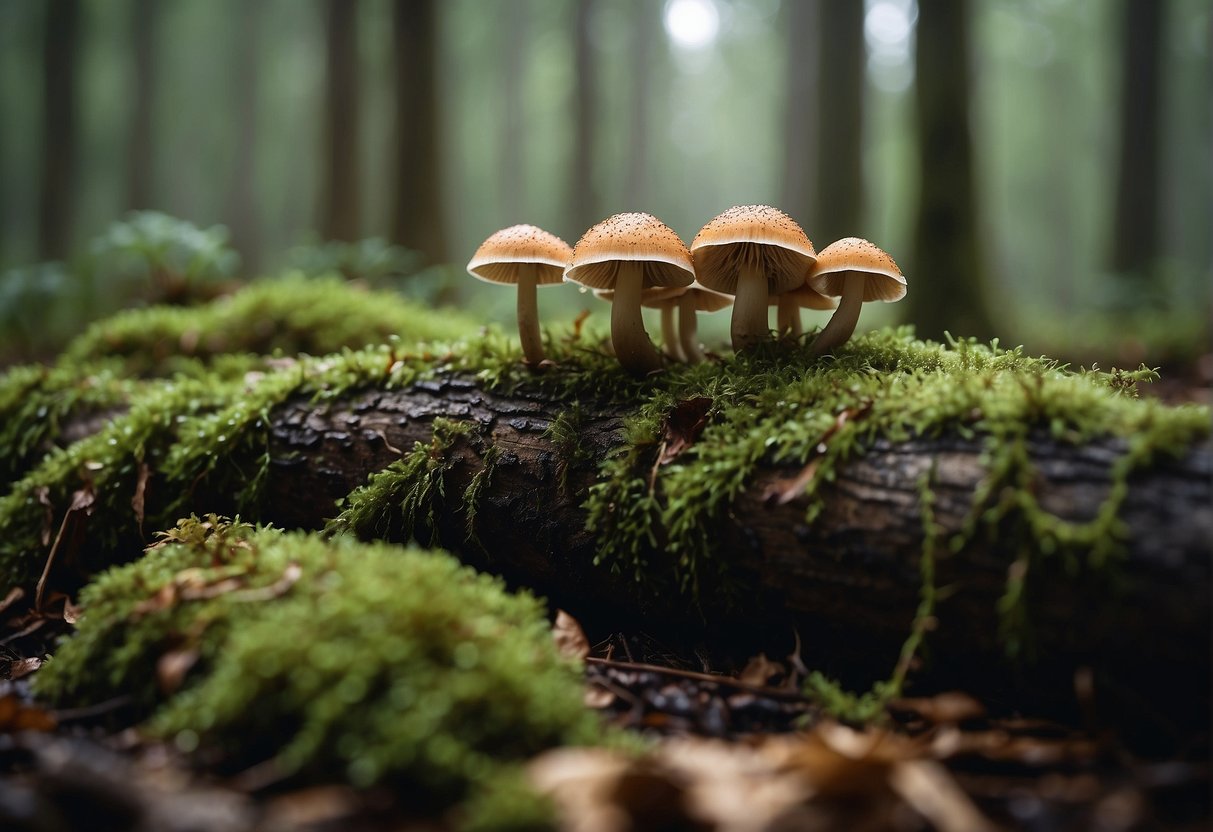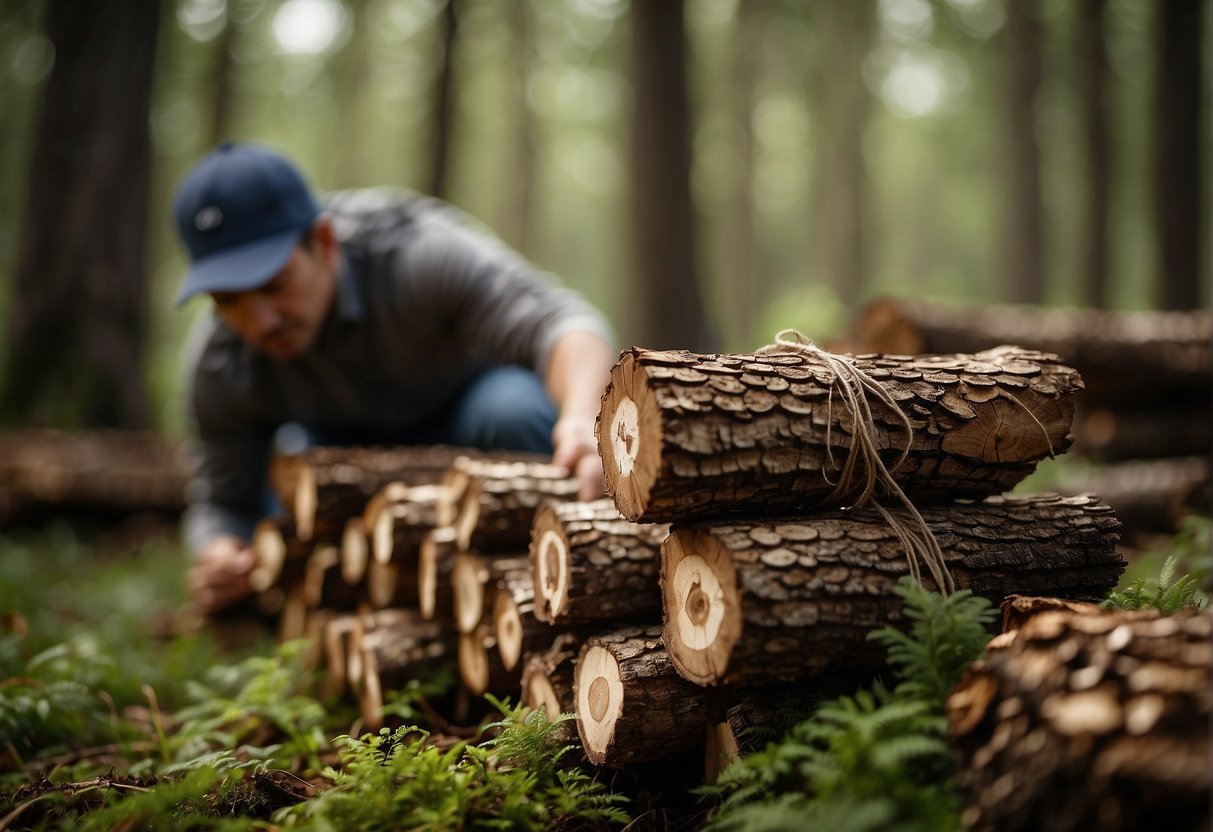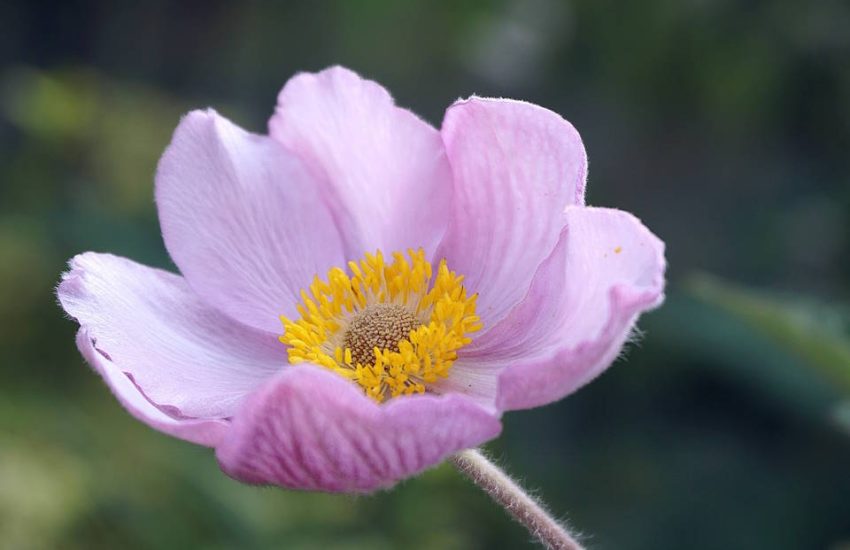Growing Mushrooms on Logs: A Beginner’s Guide
Growing mushrooms on logs is a popular method for cultivating edible and medicinal mushrooms. This technique involves inoculating logs with mushroom spawn, which then colonizes the wood and produces fruiting bodies. Growing mushrooms on logs is a sustainable and low-cost way to produce fresh mushrooms, and it can be done in a variety of settings, from backyards to farms.

To grow mushrooms on logs, it is important to choose the right type of wood and spawn. Hardwood logs like oak, maple, and beech are ideal for mushroom cultivation, as they provide a sturdy and nutritious substrate for the mycelium to grow on. Mushroom spawn can be purchased from specialty suppliers or harvested from wild mushrooms, and it should be matched to the species of mushroom you want to grow. Once the logs are inoculated with spawn, they need to be kept in a cool, shady place and watered regularly to maintain moisture levels. With proper care, logs can produce mushrooms for several years, making this a sustainable and rewarding method of mushroom cultivation.
Choosing the Right Logs
Growing mushrooms on logs is a great way to produce fresh, organic mushrooms at home. However, choosing the right logs is crucial for the success of this process. This section will cover important factors to consider when selecting the right logs for growing mushrooms.
Selecting Tree Species
When selecting tree species, it is important to choose hardwood logs such as oak, maple, and beech. These species are ideal for growing mushrooms because they contain the necessary nutrients that the mushrooms need to grow. Softwoods, on the other hand, are not recommended because they do not contain the same nutrients as hardwoods.
Log Preparation
Once the tree species has been selected, the next step is log preparation. Freshly cut logs are ideal for mushroom cultivation because they have not been exposed to other fungi or bacteria that could compete with mushroom mycelium. Hardwood logs should be cut to a length of 3-4 feet and a diameter of 3-8 inches.
Before inoculating the logs with mushroom spawn, they should be allowed to dry for a few days to reduce moisture content. This will help prevent the growth of unwanted fungi and bacteria that could harm the mushrooms. After drying, the logs should be stored in a cool, dry place until they are ready to be inoculated.
In summary, choosing the right logs is crucial for the success of growing mushrooms on logs. Hardwood species such as oak, maple, and beech are ideal, and freshly cut logs should be used. Proper log preparation is also important to ensure the logs are ready for inoculation.
Mushroom Species and Spawn Selection
Types of Mushrooms
When it comes to growing mushrooms on logs, there are several types of mushrooms that can be cultivated successfully. Some popular mushroom species for log cultivation include oyster mushrooms, shiitake mushrooms, reishi, lion’s mane, and nameko. Each of these species has its own unique growth requirements, so it’s important to choose the right species for the environment.
Oyster mushrooms are one of the easiest mushrooms to grow on logs and are a great choice for beginners. They are also one of the most versatile mushrooms, with a range of colors, shapes, and flavors. Shiitake mushrooms are another popular choice for log cultivation, with a rich, meaty flavor and a long shelf life.
Reishi and lion’s mane mushrooms are medicinal mushrooms that have been used for centuries in traditional Chinese medicine. They are both slow-growing mushrooms that require a bit more attention than other species, but are well worth the effort. Nameko mushrooms are a small, amber-colored mushroom with a slightly nutty flavor and a gelatinous texture.
Spawn Types
When it comes to selecting mushroom spawn for log cultivation, there are several options available. Sawdust spawn, plug spawn, and dowels are the most common types of spawn used for log cultivation.
Sawdust spawn is made from sterilized sawdust that has been inoculated with mushroom mycelium. It is easy to use and can be quickly applied to the logs using a drill and a wax sealant. Plug spawn is made from wooden dowels that have been inoculated with mushroom mycelium. The dowels are hammered into holes drilled in the logs and sealed with wax. Dowels are similar to plug spawn, but are smaller and easier to handle.
When selecting mushroom spawn, it’s important to choose a spawn type that is compatible with the species of mushroom being grown. Each species has its own preferred spawn type, so it’s important to do some research before making a selection. By choosing the right mushroom species and spawn type, growers can ensure a successful harvest of delicious, home-grown mushrooms.
Inoculation Process

Drilling and Filling
The first step in inoculating logs with mushroom spawn is to drill holes into the logs. The holes should be spaced evenly around the log and should be about 1 inch deep. The size of the drill bit used will depend on the type of inoculation tool being used.
Once the holes have been drilled, they should be filled with mushroom spawn. The spawn can be in the form of sawdust or plugs. The sawdust should be compressed into the hole using an inoculation tool. The plugs can simply be hammered into the hole until they are flush with the surface of the log.
Sealing with Wax
After the holes have been filled with spawn, they should be sealed with wax. The wax serves to protect the spawn from contamination and to keep it moist. Hot wax should be used for this purpose.
To apply the wax, it should be melted in a double boiler or a wax melting pot. Once it is melted, it should be applied to the holes using a brush or a spatula. The wax should be applied generously to ensure that the holes are completely sealed.
Inoculated logs should be kept in a cool, dark place for several months until the spawn has fully colonized the log. Once the log is fully colonized, mushrooms should begin to grow from the holes.
Overall, the inoculation process is a simple and straightforward process that can be done by anyone with a few basic tools and some patience. By following the steps outlined above, anyone can grow their own mushrooms on logs at home.
Caring for Inoculated Logs

Once the logs have been inoculated with mushroom mycelium, they require proper care to ensure healthy growth of mushrooms. Here are some tips on how to care for inoculated logs.
Optimal Conditions
Mushroom logs require a shady area with indirect sunlight. Direct sunlight can dry out the logs and harm the mycelium. The ideal temperature range for log cultivation is between 60-80°F. Logs should be kept in a cool, moist, and well-ventilated area.
Maintaining Moisture
Logs should be kept moist but not overly wet. Overwatering can lead to contamination and fungal growth that competes with the mushroom mycelium. Watering should be done on a regular basis, especially during dry spells. A water source nearby is convenient for watering the logs.
Protection from Contaminants
Logs should be protected from contaminants such as insects, rodents, and other fungi. Covering the logs with a layer of plastic or shade cloth can help keep pests away. If contamination occurs, remove the affected area immediately to prevent further spread.
Proper care of inoculated logs is essential for successful mushroom cultivation. By maintaining optimal conditions, moisture levels, and protection from contaminants, growers can expect a bountiful harvest of mushrooms.
Harvesting and Storage

Determining Harvest Time
When growing mushrooms on logs, it is important to harvest them at the right time to ensure the best results. The fruiting time will vary depending on the species of mushroom and the climate, but generally, mushrooms are ready to be harvested when the caps have fully opened and the gills are exposed.
It is important to note that mushrooms should be harvested before the cap begins to flatten out and the gills start to darken. At this point, the mushroom is becoming overripe and the spores will start to drop, which can reduce the yield of future flushes.
Post-Harvest Handling
After harvesting the mushrooms, it is important to handle them carefully to ensure that they stay fresh and maintain their quality. The first step is to remove any debris or dirt from the mushrooms using a soft brush or damp cloth.
If the mushrooms are not going to be used immediately, they should be stored in a cool, dry place. Mushrooms can be stored in the refrigerator for up to a week, but they should not be stored in a plastic bag as this can cause them to sweat and become slimy. Instead, place them in a paper bag or wrap them in a paper towel.
If you have a healthy log that is still producing mushrooms, you can continue to harvest from it until it stops fruiting. Once the log has stopped producing, it can be dried or frozen for later use. To dry mushrooms, simply place them on a wire rack and allow them to air dry for several days until they are completely dry.
In conclusion, harvesting and storing mushrooms is a critical step in the process of growing mushrooms on logs. By harvesting them at the right time and handling them carefully, you can ensure that your mushrooms stay fresh and maintain their quality.
Frequently Asked Questions

What is the best time of year to inoculate logs for mushroom cultivation?
The best time to inoculate logs for mushroom cultivation is during the dormant season, which is usually in the fall or winter. This is because the fungi are less active during this time and the logs are less likely to dry out.
How does one properly sterilize logs before growing mushrooms?
Logs can be sterilized by soaking them in hot water for at least an hour. This will kill any bacteria or fungi that may be present on the logs. After soaking, the logs should be left to dry for a few days before inoculating with mushroom spawn.
Which types of mushrooms are best suited for growth on logs?
Some of the best mushrooms for log cultivation include shiitake, oyster, and lion’s mane mushrooms. These varieties are hardy and able to grow on a wide range of tree species.
Can you grow mushrooms on logs indoors, and if so, how?
Yes, mushrooms can be grown on logs indoors. The logs should be kept in a cool, dark place and misted regularly to maintain humidity. It is important to choose a mushroom variety that is suitable for indoor growing, such as oyster mushrooms.
What are the most recommended logs to use for mushroom plug inoculation?
The most recommended logs for mushroom plug inoculation are hardwood logs, such as oak, maple, and birch. These logs are able to support the growth of a variety of mushroom species and are readily available.
For beginners, which mushroom grow kits are most suitable for log cultivation?
For beginners, mushroom grow kits that are specifically designed for log cultivation are the best option. These kits typically include everything needed to get started, including mushroom spawn, drill bits, and instructions. Some popular kits include the Shiitake Mushroom Log Kit and the Oyster Mushroom Log Kit.


